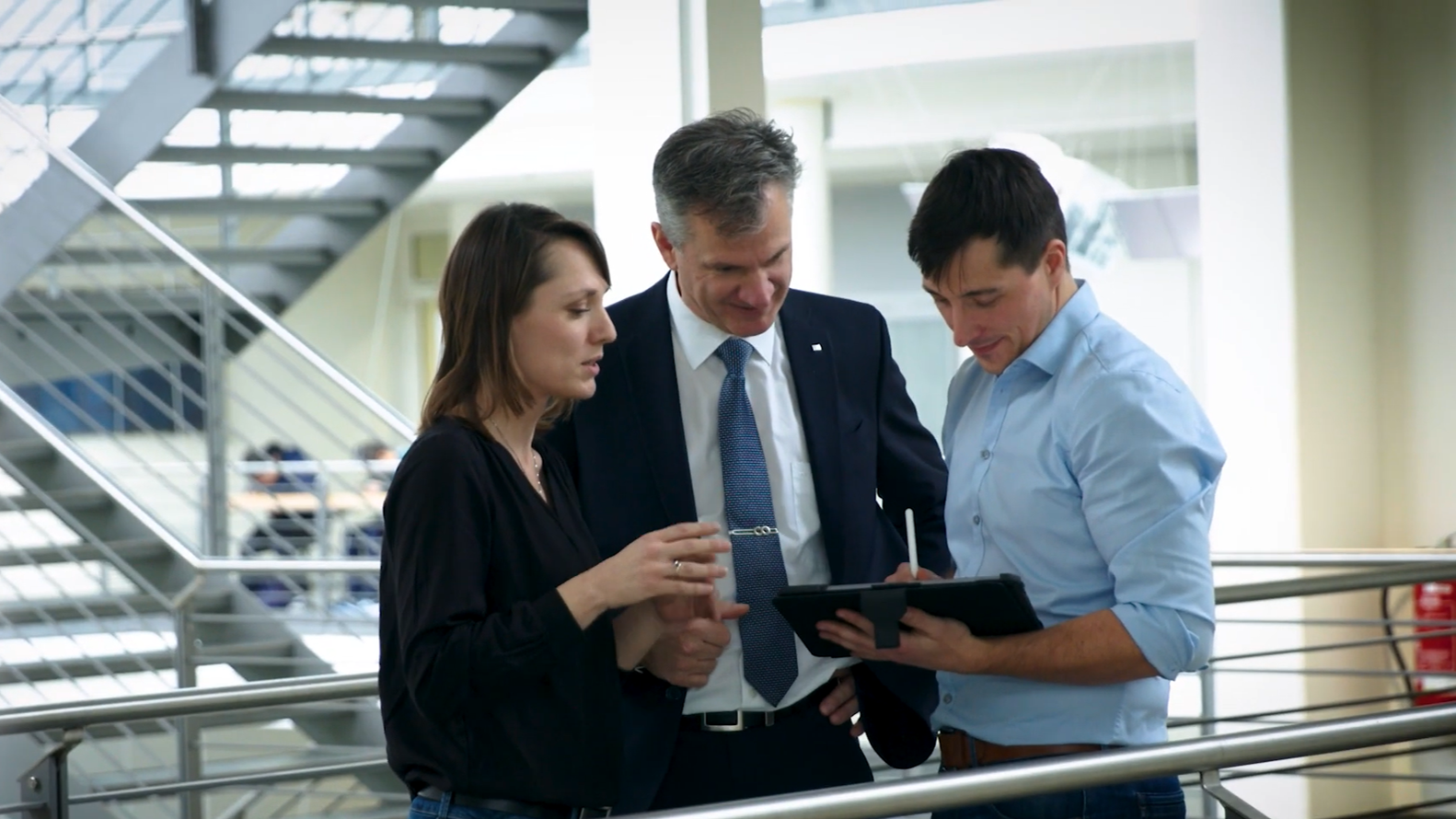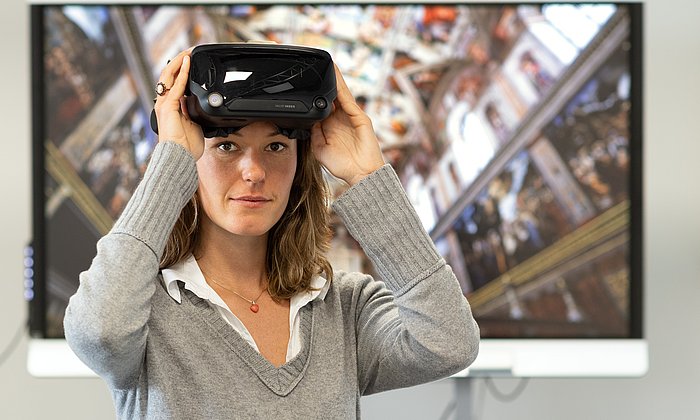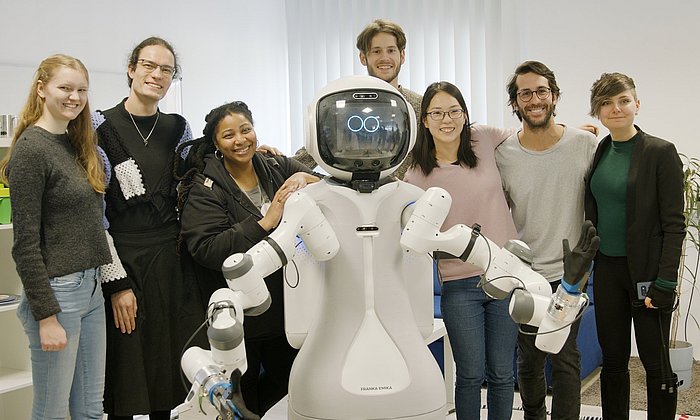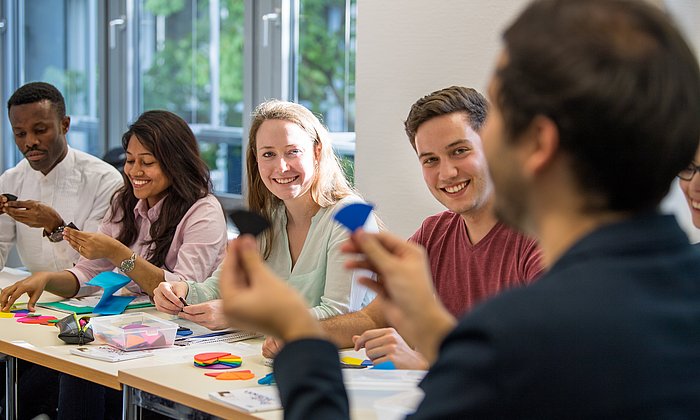Pilot project to dovetail digital and analog elements
Strategies for a new normal in teaching

Dear Professor Stahl, teaching at TUM is undergoing radical change. The TUM Teaching Reform aims to understand and design teaching holistically in order to meet the challenges of the present and the future. Among many other things, this of course affects teaching formats. The Corona pandemic has forced a swift and comprehensive introduction of digital or hybrid teaching formats. Even if courses can now be held in on campus again, the experiences of the Corona period should also be made beneficial after the pandemic.
Karsten Stahl: Absolutely. We certainly don't want to just return to the previous situation. That's why the Bavarian State Ministry of Science and the Arts, together with the Bavarian Industry Association, launched the “NewNormal” program last year, which aims to establish just this – a new normal in university teaching: analog teaching formats interlinked with digital ones. TUM is one of four universities that initially received funding. We launched a pilot project in May 2022 and have set ourselves the task of developing a teaching strategy that is both competence- and demand-optimized.
What exactely does this mean?
Karsten Stahl: With our project, we want to anchor a holistic perspective on teaching formats. The project team consists primarily of a member of my department, the Chair of Machine Elements, and a member of ProLehre | Media and Didactics. We are supported by about ten other chairs that are involved in teaching in the Mechanical Engineering programs. The basic idea behind the project was that disadvantages of one format should be compensated for by the advantages of another. And at the same time, the teaching formats should be specifically tailored to the needs of the students and the intended acquisition of competencies in a module.
Alexandra Strasser: Exactly, that's why we focus on the three basic needs of students according to Deci and Ryan: social integration, experience of competence, and autonomy. Depending on which phase of study the students are in, the focus is more on one or the other need. For example, the beginning of their studies represents a new stage of life for students. Here it is important that they are able to integrate quickly, make contacts and build relationships with the teachers. This can be achieved primarily through on-site elements, such as lectures in the lecture hall or discussions in small group exercises. As the course progresses, the desire for autonomy and the experience of competence increases. Asynchronous digital elements such as Moodle lessons, consisting of videos and intermediate questions, have their advantage here. They give students flexibility in terms of time and space, enabling, but also demanding, greater self-organization and self-control.
Rudolf Motzet: And the competence optimization of the teaching strategy should not be neglected. There are skills that can best be acquired if they are only taught in analog or digital form. The production of components is best learned on the production machine. In contrast, designing using CAD software or creating a PLC program can be taught purely digitally.
What steps did you take during the pilot phase at TUM to anchor such a teaching strategy in practice?
Rudolf Motzet: At the beginning of the pilot phase, we developed a handout for teachers based on these basic ideas. It starts by defining important technical terms and then compares analog, digital synchronous and asynchronous teaching and learning elements. On this basis, guidelines and recommendations are given for the selection and design of teaching formats. An elaborated concept matrix presents the degree of digitization of all courses in a degree program and is intended to facilitate coordination between the individual modules and ensure that they are suitable for study. This is rounded off by a collection of methods, which is intended to provide teachers with suggestions for designing the selected teaching formats, and a comprehensive glossary, which is intended to guarantee the uniform use of terms.
In the next step, building on the connecTUM project, chairs were recruited for the pilot phase. Together with them, we first completed the conception matrix for the total of ten modules and the corresponding 18 teaching formats, taking into account the needs and the competencies to be acquired by the students for the respective module as well as the position in the degree program. Finally, the documents prepared were made available to the persons responsible for the individual modules. With this, they were able to adapt their course or get suggestions for the design of the format. Meanwhile, they could get advice and support from the project leaders at any time.
Alexandra Strasser: To then learn what the students found helpful or obstructive to learning, and whether the consideration of student needs and the competencies to be acquired in the choice of the teaching format had an influence on student satisfaction and the acquisition of competencies, we conducted two evaluations. Unfortunately, we had very little response for the first one in December. But when we adjusted the second one and integrated it into the central evaluation of the courses, we had an excellent response rate.
What did the evaluation show?
Alexandra Strasser: The results were very interesting. Both the teachers and the students were satisfied with the teaching format chosen in each case and felt that it was well suited for conveying the content. In addition, the comments and requests for changes provide insight into what students find motivating and what they find helpful or hindering to learning. Looking further at the results, as suspected, a strong variation in the exchange between instructors and learners can be found in relation to the chosen teaching format: On-site courses promote exchange, while online-only formats diminish it. The results show that students in the third semester want more digital formats than right at the beginning of their studies.
Rudolf Motzet: Surprisingly, the flipped classroom format was rated worse than the other formats in some cases. This is probably due to the fact that this format places a lot of responsibility on the students. Also, it is not as intuitive and easy to implement and requires a very good conceptual design. It would be advisable for teachers to seek advice and support from didactics experts when developing the concept.
In addition, the results provide initial indications of how important it is for students to feel socially integrated. This means that one should not only seek and promote contact with and between students in on-site courses, but also really be “present” in online-only formats. Especially in asynchronous digital formats, where a high degree of autonomy is demanded, it is important, especially for weak students, to have a central contact person who can help them with problems and guide them.
What conclusions do you draw after the pilot phase – and what will happen in the next semesters?
Karsten Stahl: The results from the pilot phase give us important clues for the selection and design of teaching formats. It is not only important to focus on the students with their needs and the competencies to be acquired, but also to approach the conceptual design of a course holistically.
Rudolf Motzet: On the one hand, there should be a willingness on the part of the teachers to deal with a new conception or redesign of the course. Incentives such as personnel and financial support could be created for this. In addition, it makes sense to be in close contact with the department for quality management at the university from the very beginning. And it is extremely important to involve the students. After all, they have many concrete ideas about what helps or hinders them in their learning. It is therefore very promising to include the students’ perspective in the design of teaching formats.
Technical University of Munich
- Konstantin Götschel – TUM Center for Study and Teaching
- goetschel@zv.tum.de


